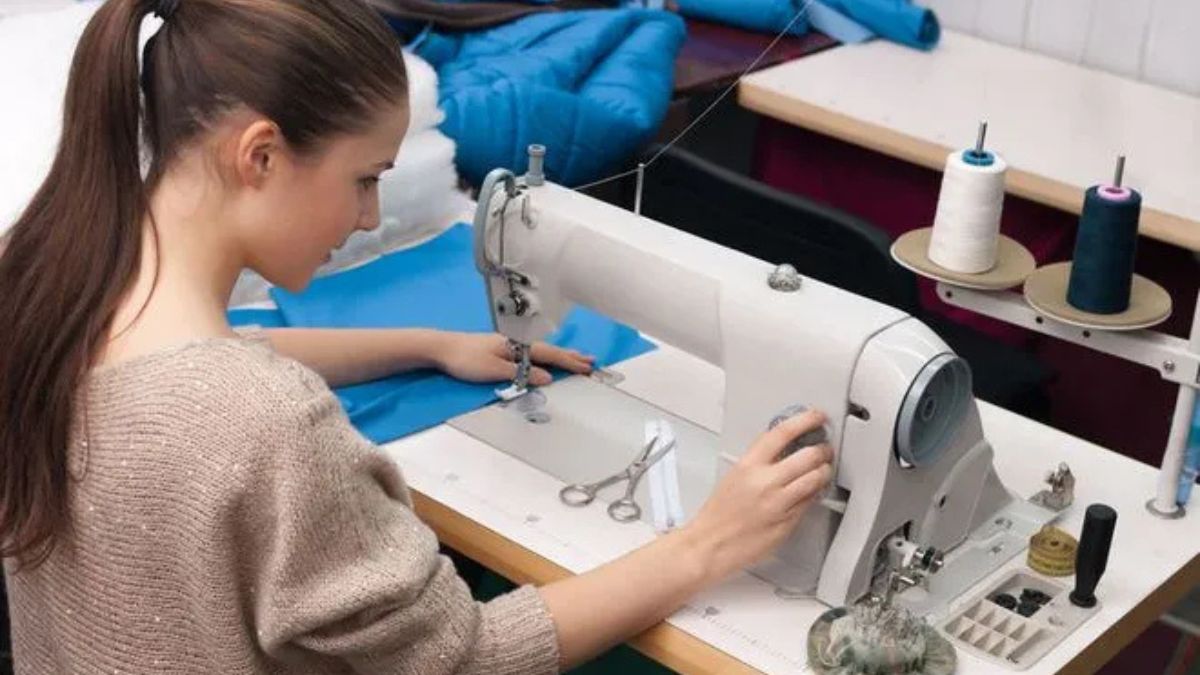
Who is Kathleen Nimmo Lynch? Beyond the Headlines
October 2, 2025
NLPadel: Your Comprehensive Guide to Padel in the Netherlands
October 13, 2025In the world of sewing and garment construction, understanding nahttypen— the German term for types of seams— is fundamental for anyone looking to create durable, aesthetically pleasing, and functional pieces. Whether you’re a beginner hobbyist stitching your first dress or a seasoned tailor crafting bespoke suits, mastering various nahttypen can elevate your projects from basic to professional. Seams are the backbone of any fabric assembly, holding pieces together while influencing the overall strength, flexibility, and appearance of the final product. This guide dives deep into the essentials of nahttypen, exploring their varieties, applications, and tips for seamless execution.
Seams aren’t just functional; they can be decorative, protective, or even innovative in modern textile industries. By incorporating the right nahttypen, you ensure your creations withstand wear and tear while aligning with fabric properties like weight, stretch, and weave. In this SEO-optimized article, we’ll cover basic and advanced nahttypen, how to choose them for different projects, and practical advice to avoid common pitfalls. Let’s stitch together the knowledge you need to enhance your sewing skills.
What Are Nahttypen and Why Do They Matter?
Nahttypen refer to the diverse methods used to join two or more pieces of fabric through stitching or other bonding techniques. Originating from German sewing terminology, “naht” means seam, and “typen” denotes types, making nahttypen a catch-all phrase for seam classifications. These range from simple straight stitches to complex enclosed finishes, each tailored to specific needs.
Why focus on nahttypen? A poorly chosen seam can lead to fraying, puckering, or even garment failure, while the right one enhances durability and style. For instance, in fashion design, nahttypen influence drape and fit, whereas in industrial applications like upholstery or sportswear, they prioritize strength and weather resistance. According to sewing experts, selecting appropriate nahttypen can extend a garment’s lifespan by up to 50%, reducing waste and promoting sustainable crafting practices.
Historically, nahttypen evolved from hand-sewn techniques in ancient tailoring to machine-assisted methods in the industrial era. Today, with advancements like laser sealing, nahttypen bridge traditional craftsmanship and cutting-edge technology. Understanding these types empowers creators to experiment confidently, whether for personal use or professional production.
Basic Nahttypen for Beginners
Starting with foundational nahttypen is key for novices. These are straightforward, requiring minimal tools like a sewing machine or needle and thread.
Plain Seam (Offene Naht)
The plain seam, or offene naht in German terminology, is the most basic of all nahttypen. It involves placing two fabric pieces right sides together and stitching along the edge with a straight line, typically 5/8 inch from the raw edge. After sewing, press the seam allowances open for a flat finish.
This nahttyp is versatile and ideal for medium-weight fabrics like cotton or linen. It’s commonly used in blouses, skirts, and home decor items. Pros include simplicity and speed, but it may fray without finishing. To make it: Align fabrics, pin, stitch, and press. For added strength, topstitch along the seam line.
French Seam (Französische Naht)
A favorite for delicate materials, the French seam encloses raw edges within the seam itself, creating a clean interior. To create this nahttyp: Sew wrong sides together with a narrow allowance (1/4 inch), trim, flip to right sides together, and sew again (3/8 inch) to encase the edges.
Perfect for sheer fabrics like chiffon or silk in lingerie and dresses, this nahttyp offers high aesthetic appeal and prevents fraying. It’s moderately strong but not ideal for bulky materials. Beginners love it for its polished look without needing a serger.
Flat-Felled Seam (Kappnaht)
Known for its robustness, the flat-felled seam folds one allowance over the other and topstitches it down. Start by sewing wrong sides together, trim one allowance, fold the other over it, and stitch close to the edge.
This nahttyp shines in denim jeans, shirts, and outdoor gear, providing very high strength and a neat, flat appearance. It’s common in workwear due to its durability against washing and wear.
Other basic nahttypen include the zigzag seam for stretchy knits, preventing pops in activewear, and the overlock seam, which trims and finishes edges in one go using a serger—great for preventing fray in casual clothing.
Advanced Nahttypen for Professional Results
Once comfortable with basics, explore advanced nahttypen that add functionality or flair.
Bound Seam
In bound nahttypen, a fabric strip or bias tape encases the raw edges, adding both protection and decoration. Sew the seam as plain, then wrap and stitch the binding.
Used in leather jackets or silk scarves, it enhances edges on fray-prone fabrics. It’s decorative, with options for contrasting colors, and boosts durability in high-end fashion.
Lapped Seam
Overlapping one fabric edge over another and stitching through both layers defines the lapped nahttyp. It’s simple: Align with an overlap, pin, and topstitch.
Ideal for thick materials like denim or leather in bags and upholstery, this nahttyp provides strength and a rustic look.
Welt Seam
Similar to flat-felled but with a raised effect, the welt seam stitches one allowance flat while folding the other under. It’s created by offsetting allowances and double-stitching.
Common in tailored pants and coats, it adds structure and a professional finish.
Modern innovations in nahttypen include laser-sealed seams for waterproof sportswear, bonded seams using adhesives for seamless athletic apparel, and conductive seams in smart clothing for embedded electronics. These advanced types cater to industries like automotive and medical textiles, where precision is paramount.
Seam Finishes and Enhancements
No discussion of nahttypen is complete without finishes, which prevent fraying and refine appearance. Popular options include pinking shears for zigzag cuts on lightweight fabrics, serging for knit edges, and double stitching for reinforcement.
For example, a plain seam can be elevated with binding or overlocking, transforming it into a more durable nahttyp. Always match the finish to the fabric—zigzag for stretch, French for sheers.
Choosing the Right Nahttyp for Your Project
Selecting nahttypen depends on fabric type, garment purpose, and desired aesthetics. For lightweight silks, opt for French or bound seams; for heavy denims, flat-felled or lapped. Consider strength needs: high for sportswear, medium for casual wear.
Fabric weight plays a role—bulky materials suit open seams, while stretchy ones need zigzag. Test on scraps to ensure compatibility, and factor in machine capabilities; a serger expands options for overlock nahttypen.
Tips for mastery: Use quality thread, maintain even tension, and press seams at each step. Common mistakes include mismatched allowances or skipping pins—avoid them for flawless results.
FAQs About Nahttypen
What is the difference between basic and advanced nahttypen?
Basic nahttypen like plain or French are simple and suitable for beginners, focusing on joining fabrics. Advanced ones, such as welt or laser-sealed, add specialized features like waterproofing or decoration, often requiring advanced tools.
Which nahttyp is best for stretch fabrics?
Zigzag or overlock nahttypen are ideal for stretchy materials, as they allow flexibility without breaking stitches.
Can I use nahttypen interchangeably?
Not always—match to fabric and purpose. For example, French seams suit delicates, while flat-felled excel in durable items.
How do I prevent fraying in nahttypen?
Apply finishes like serging, pinking, or binding to raw edges.
Are there eco-friendly nahttypen?
Yes, bonded seams reduce thread waste, and using organic threads enhances sustainability.
What’s the easiest nahttyp for beginners?
The plain seam is the simplest to learn and execute.
Final Words
Mastering nahttypen unlocks endless creative possibilities in sewing, from everyday garments to innovative designs. By understanding these seam types, you not only improve the quality of your work but also embrace semantic SEO practices through organic integration of terms like stitching techniques and fabric joining methods. Experiment, practice, and let nahttypen inspire your next project—happy sewing!

